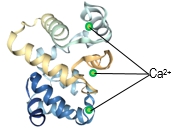Understanding the distinction between simple and conjugated proteins is fundamental in biochemistry. Simple proteins consist solely of amino acid residues, meaning they do not contain any additional chemical components. In contrast, conjugated proteins are more complex; they also contain amino acid residues but include other permanently associated chemical components known as prosthetic groups.
Prosthetic groups are defined as tightly bound, non-amino acid components that are integral to the structure and function of conjugated proteins. For example, chymotrypsin, an enzyme that breaks down peptide bonds, is classified as a simple protein because it is composed entirely of amino acid residues without any additional components. Its structure features alpha helices, beta-pleated sheets, loops, and beta turns, all of which are formed from amino acids.
On the other hand, hemoglobin serves as an example of a conjugated protein. It is a heterotetramer, meaning it consists of four subunits, with two types of identical subunits. A key feature of hemoglobin is the presence of heme groups, which are prosthetic groups containing iron atoms and cyclic carbon rings. These heme groups are crucial for hemoglobin's function in oxygen transport, distinguishing it from simple proteins like chymotrypsin.
In summary, the primary difference between simple and conjugated proteins lies in the presence of prosthetic groups in conjugated proteins, which are essential for their biological functions. Understanding these differences is vital for further exploration of protein structure and function in biological systems.






